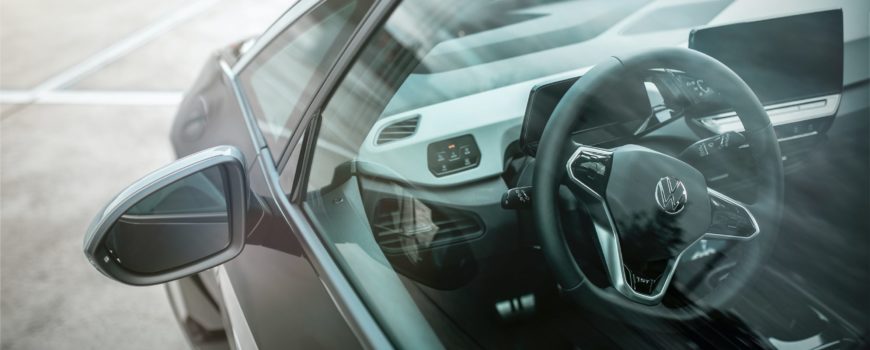At EV Wired, we understand the difficulties in choosing the right EV charger cable for you your electric car’s specific needs. That’s why we’ve written a comprehensive guide to help you on your way.
Summary
For the most part, an EV charging cable is a must-have for charging your electric vehicle both at home and at most public charging stations. Charge points that come with tethered cables, however, are an exception. With that in mind, let’s take a look at which cable type best applies to your needs.
- Your electric vehicle – be it fully electric or a plug-in hybrid – will have either a Type 1 or Type 2 AC socket (with Type 2 being the EU standard and used by all new and most recent electric vehicle models).
- Your vehicle’s inlet type determines what type of cable it will need: ensure yours has the relevant plug / connector.
- With the use of your charging cable, you will be able to charge from home charging stations, workplace and public charging points etc, the majority of which do not have a tethered cable.
- ‘Rapid’ (or ‘Mode 4’) charge points, however, along with a small amount of public AC charge points, provide tethered cables. As such, you do not need to bring your own charger cable to use these.
- Electric vehicle charger cables vary in length, with most (including manufacturer-provided models) being around 5 metres. Cable current ratings are largely 16A or 32A and are able to carry single-phase or three-phase electricity.
Do I need a separate charging cable?
A separate charging cable is essential if you want to charge from any charge point (public or domestic) that does not provide a cable tethered to the charging unit. Most AC charge points on public networks or home charge points (that plug into a standard 3-pin wall socket, for instance) will require a separate charging cable.
As mentioned, many public charge points do include a tethered charging cable, as may your own home set-up, but the vast majority of EV drivers consider their own separate charging cable a vital piece of equipment regardless.
Rapid charger and domestic charge points make up the majority of those that come equipped with a tethered cable, though a small amount of public AC units will as well.
The types of charge points that come equipped with a tethered cable are mostly
Socket type — Where to find — When to use
3-pin plug — Traditional domestic socket. — Charging via a 3-pin socket is useful in an emergency, but not ideal for long-term usage. These sockets are not designed for extended periods of vehicle charging and offer a much slower rate of charge than simple, alternative methods. Best kept for emergencies.
Type 2 — This is a standard AC charging socket and is found at public charge stations and non-tethered home chargers. — Increasingly universal and with a speedy charge rate, Type 2 charging is the perfect choice for the routine charging of your electric vehicle.
Find out more about the different socket and EV connector types.
Tip: Practically all electric vehicle purchases will include a charging cable. Some companies, however, provide only charging cables suitable for domestic 3-pin sockets. Where possible, we highly recommend opting for a Type 2 charger instead.
If this isn’t possible, don’t worry – EV Wired has a stellar range of professionally made, reliable Type 2 charger cables.
Which charging cable should I choose?
All EV charging cables have two ends, with one end used for plugging into your vehicle’s charge socket and the other to the charge point socket.
Whatever your vehicle’s charge socket, you will almost definitely need a charging cable with a Type 2 connector on one end for public charging. To select a cable, simply follow the guidance below:
- Pick the correct connector type cable for your car — Check what type charge socket your car has (either Type 1 or Type 2) and ensure that the connector you select matches. The other end of your cable (i.e. the end that will connect to a charge point) should always be a Type 2.
- Choose the best length cable for you – Bear in mind where you are likely to do most of your charging before selecting a cable length. A longer, 10 metre cable may make reaching some charge stations simpler. A shorter cable on the other hand is easier to store, and may be a good choice if you have an easy-to-reach home charge point.
- Ensure your cable offers a suitable current rating for your vehicle – At the very least, you will need a cable whose current rate matches your max AC charge rate (16A = ~3.6kW, 32A = ~7kW for single phase). It may, however, be worth purchasing a higher rated cable so that you can also charge at a higher rate in the future.
Tip: If you are unsure of your car’s maximum charging rate, either check your vehicle guidebook
If your vehicle supports three-phase electricity, we suggest investing the little extra into purchasing a three-phase cable. Though the majority of homes don’t have three-phase power, there is an increasing amount of public three-phase charging points available in the UK, and the increased charge rate these offer is a great benefit.
About Author
John has been writing motoring articles since 2008, and was an early adopter of electric vehicles in 2015.
